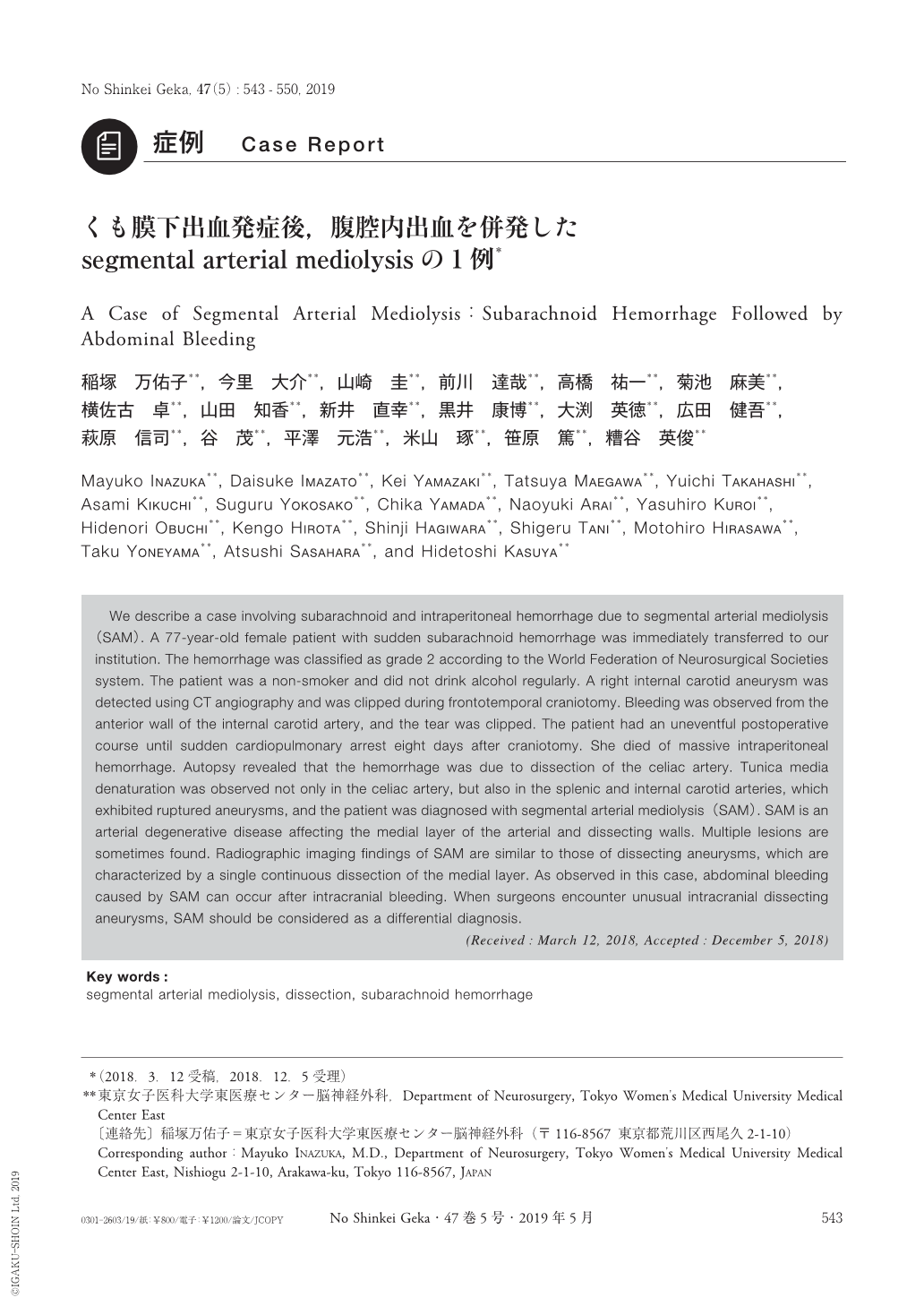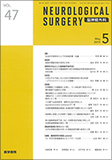Japanese
English
- 有料閲覧
- Abstract 文献概要
- 1ページ目 Look Inside
- 参考文献 Reference
Ⅰ.はじめに
Segmental arterial mediolysis(SAM)は,中〜小動脈に特異な病理所見を呈する紡錘状動脈瘤を形成する稀な疾患である6).腹部内臓動脈瘤での報告が多いが7,8),頭蓋内動脈病変の症例も散見される15).今回われわれは,内頚動脈瘤破裂によるくも膜下出血(subarachnoid hemorrhage:SAH)発症後,致死的な腸間膜動脈破裂による出血を合併し,剖検にてSAMによる頭蓋内および腹腔内動脈瘤と診断された1例を経験したので,文献的考察を加え報告する.
We describe a case involving subarachnoid and intraperitoneal hemorrhage due to segmental arterial mediolysis(SAM). A 77-year-old female patient with sudden subarachnoid hemorrhage was immediately transferred to our institution. The hemorrhage was classified as grade 2 according to the World Federation of Neurosurgical Societies system. The patient was a non-smoker and did not drink alcohol regularly. A right internal carotid aneurysm was detected using CT angiography and was clipped during frontotemporal craniotomy. Bleeding was observed from the anterior wall of the internal carotid artery, and the tear was clipped. The patient had an uneventful postoperative course until sudden cardiopulmonary arrest eight days after craniotomy. She died of massive intraperitoneal hemorrhage. Autopsy revealed that the hemorrhage was due to dissection of the celiac artery. Tunica media denaturation was observed not only in the celiac artery, but also in the splenic and internal carotid arteries, which exhibited ruptured aneurysms, and the patient was diagnosed with segmental arterial mediolysis(SAM). SAM is an arterial degenerative disease affecting the medial layer of the arterial and dissecting walls. Multiple lesions are sometimes found. Radiographic imaging findings of SAM are similar to those of dissecting aneurysms, which are characterized by a single continuous dissection of the medial layer. As observed in this case, abdominal bleeding caused by SAM can occur after intracranial bleeding. When surgeons encounter unusual intracranial dissecting aneurysms, SAM should be considered as a differential diagnosis.

Copyright © 2019, Igaku-Shoin Ltd. All rights reserved.


